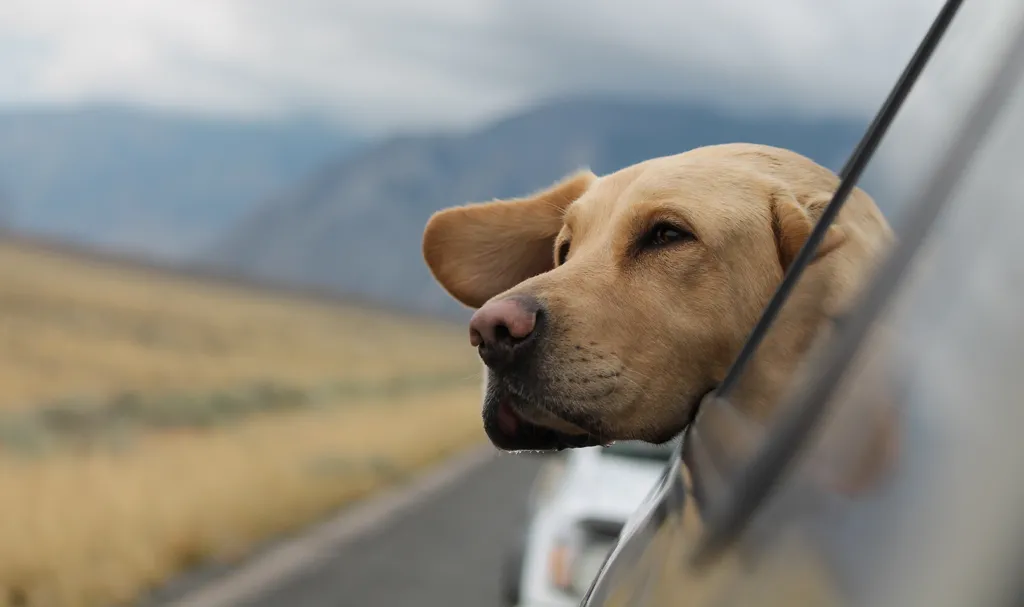6 Tips for Taking Pets on Road Trips


Many of us have gone on long journeys and short weekend getaways with our furry (or perhaps scaly or feathery?) friends in tow. Although many of these trips have passed joyfully and uneventfully, some have unfortunately ended with less desirable outcomes. While we can’t avoid the unpredictable, some simple planning can go a long way to ensure the trip goes as smoothly as hoped.
1. The Pre-Game
Remember that our pets may not necessarily share our wanderlust as humans. If you are lucky enough to have a pet who is perfectly content rolling with the whole process, congratulations, and please advance to step 2. On the other end of that spectrum, planning ahead is extremely helpful if you anticipate that anxiety or sedation medications will be needed for the trip to help your pet travel more comfortably. Remember that the travel part itself may increase stress regardless, so any well-thought-out plan may still need some adjustments.
Several “natural” anxiety relief products (from your veterinarian or in pet stores) may help take the edge off for some pets, but trying them before your actual travel will confirm if they will help your pet relax the way you expect. If supplements aren’t going to cut it, having a conversation with your veterinarian will allow you to create an appropriate management plan and decide what pharmaceuticals are indicated. If medications are going to be used, administering them on a trial basis well in advance of your travels allows for an understanding of how your pet will respond, as well as an opportunity to tweak the dose to the desired effect if necessary, all in the comfort of your own home environment so that you know exactly how to use them during your adventure safely.
2. Your Pet’s “Suitcase”
Pack enough of your pet’s routine medications and diet to complete your trip, allowing for hiccups and delays in your anticipated travel time. Carrying a copy of medical records and a current vaccination certificate can help give baseline medical information if any emergency care is needed. Some pets also have favorite toys and blankets/beds, which may help them settle in with familiar smells along the way.
3. Check the Chip
August 15th may be “National Check the Chip Day,” but this is important 365 days of the year! Suppose your pet does not have a chip. In that case, consider having your veterinarian implant one before your departure. If your pet is microchipped, confirm with the manufacturer that your personal contact information, particularly your phone number, is up-to-date. External identification should be legible (tags get worn with time) and attached securely to a properly fitted collar or harness.
4. Plan your Route
We live in a world fortunate to have phone-driven maps, allowing us to find our way much easier than using the old-fashioned AAA TripTiks. Before leaving for your journey, researching 24/7 veterinary emergency care centers and dropping pins every few hours on your route allows you to have a plan if the unthinkable happens and your pet is in dire need of medical care. Alternatively, multiple telemedicine/tele-triage service platforms may be used on the go if needed. These services may minimally provide some reassurance if you are uncertain of what action you should take during an event. Please note that telemedicine availability may depend on geographic location as laws vary between states.
5. Safety on the Road
Pets can be quite a distraction during the actual trip, and it’s important to remember that even a less severe fender-bender can end with injuries. Securing your pets while moving using appropriate pet-suitable restraints/kennels may go a long way to help reduce their ability to disturb you while driving and may also potentially decrease injuries from life-threatening to minor in the event of an accident. It’s also wise to pack extra leashes and collars for backup in case your items do break or get lost along the way.
6. Destination Details
Before arrival, remember to confirm that pets are welcome with any hotels or sites you may be staying en route, including potential size restrictions. While “pet-friendly” may be noted, the tone may change when you show up with a large or giant breed dog. If you are visiting temporarily, kindly turn your vehicle 180 degrees and follow the same guidelines when ready to start the journey home!
If this was a relocation, phew, and welcome home! Now that you made it, schedule a wellness visit “meet-n-greet” with your new veterinary care provider as soon as possible. Even if your pet is healthy and current on vaccinations/preventions, establishing yourself as quickly as possible will give you a site to call if your pet does need urgent care before the next round of wellness care. Remember that many sites are still dealing with long wait times after the pandemic, and you may be waiting for a period to actually get an appointment. The sooner you plan, the less likely you will need to wait. Your previous veterinarian should be able to forward your pet’s records to the new site to reference the history of care.
Finally, please be mindful that, in the end, some pets do not want to travel and are much happier (relatively speaking) to be left home with a pet sitter or in a kennel. Bringing our whole family can make the trip more relaxing and fun, but it can also turn into unexpected stress, even under the best intentions. A little planning can go a long way to lessen that load!
